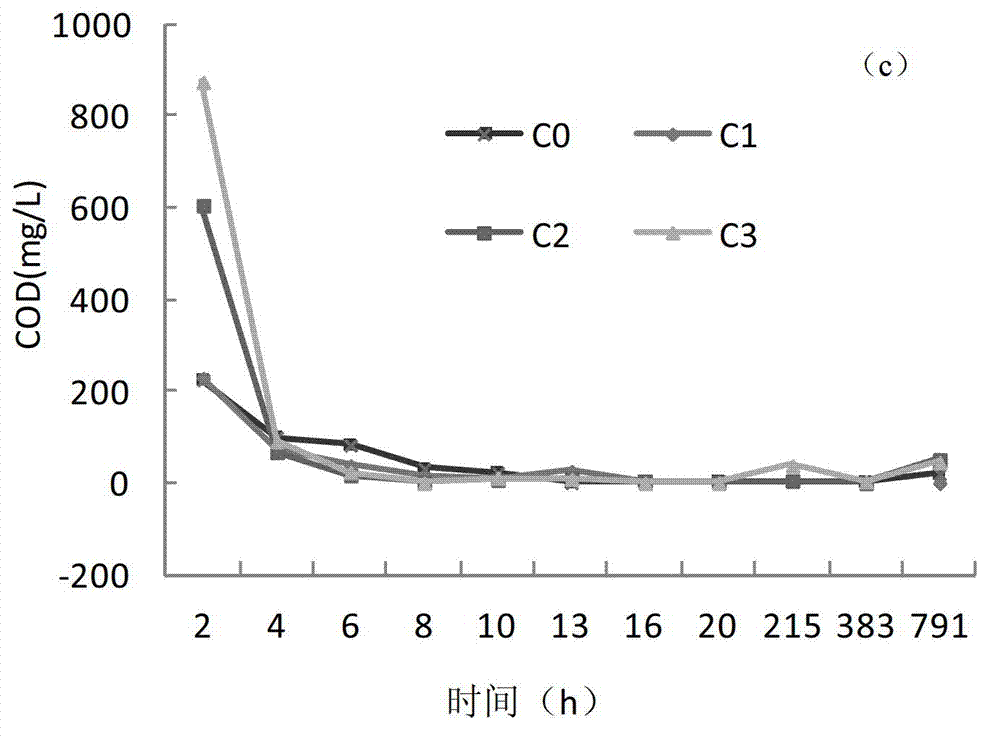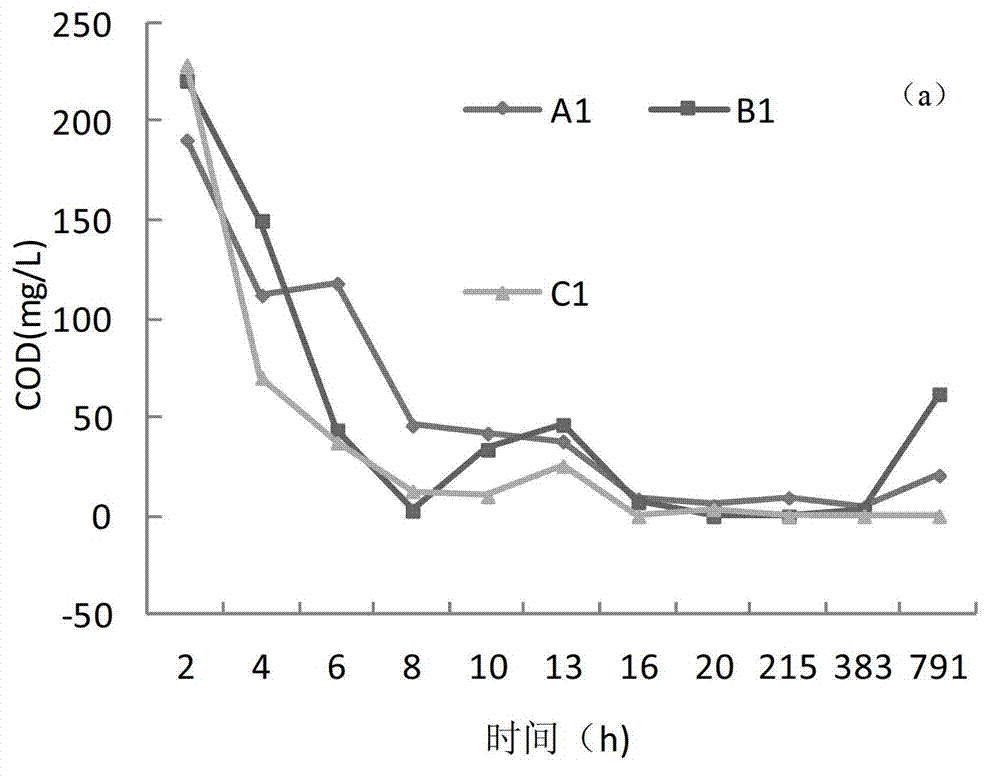Preparation method of encapsulated solid-phase slow-release composite carbon source
A compound carbon source and gelatinization technology, which is applied in the field of biological denitrification and denitrification of groundwater, can solve the problems of excessive COD in effluent, difficult control of dosage, and influence of denitrification effect, so as to ensure active and controllable carbon release. The effect of solving the problem of poor quality of carbon sources
- Summary
- Abstract
- Description
- Claims
- Application Information
AI Technical Summary
Problems solved by technology
Method used
Image
Examples
Embodiment 1-9
[0044] (1) Starch gelatinization: Weigh a certain amount of starch, add an appropriate amount of water, stir vigorously at room temperature for 30 minutes (2000r / min), then put the mixture into a constant temperature water bath at 80°C and heat it for gelatinization for 1 hour. Stirring (2000r / min);
[0045] (2) Polyvinyl alcohol dissolution: Weigh the polyvinyl alcohol according to a certain mass ratio, add an appropriate amount of water, adjust the temperature of the constant temperature water bath to 90°C, and stir while heating (1000r / min) until the polyvinyl alcohol is completely dissolved;
[0046] (3) Starch / PVA blend cross-linking: Adjust the temperature of the constant temperature water bath to 90°C, pour the polyvinyl alcohol solution into the gelatinized starch solution, stir vigorously for 1 hour (2000r / min), and the prepared cross-linking solution is viscous liquid;
[0047] (4) Encapsulation: Accurately weigh a certain mass of solid powdered sodium acetate, slow...
PUM
| Property | Measurement | Unit |
|---|---|---|
| height | aaaaa | aaaaa |
| height | aaaaa | aaaaa |
| degree of polymerization | aaaaa | aaaaa |
Abstract
Description
Claims
Application Information
 Login to View More
Login to View More - R&D
- Intellectual Property
- Life Sciences
- Materials
- Tech Scout
- Unparalleled Data Quality
- Higher Quality Content
- 60% Fewer Hallucinations
Browse by: Latest US Patents, China's latest patents, Technical Efficacy Thesaurus, Application Domain, Technology Topic, Popular Technical Reports.
© 2025 PatSnap. All rights reserved.Legal|Privacy policy|Modern Slavery Act Transparency Statement|Sitemap|About US| Contact US: help@patsnap.com



